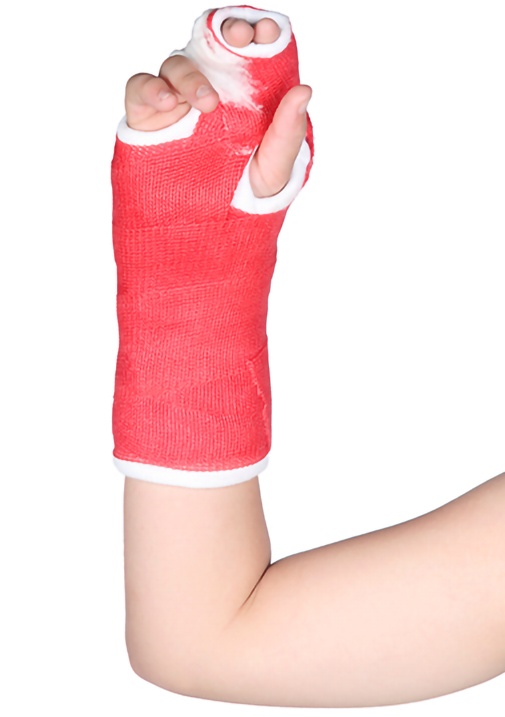
Broken bones are a common pediatric injury. One in three children sustains a bone fracture while they’re growing up. Find out what makes young, developing bones more likely to break, and learn about three fracture types that are unique to kids.
Broken bones are a common pediatric injury. In fact, some may say they’re a normal part of an active childhood. About one in three otherwise healthy children suffers a bone fracture while they’re growing up.
High energy levels, evolving coordination skills, and greater risk-taking behaviors aren’t the only reasons kids are more likely to sustain a bone fracture — children’s growing bones aren’t fully developed, making them considerably more porous, flexible, and fragile than adult bones.
At Orthopedic Center of Palm Beach County in Atlantis, Boynton Beach, and Wellington, Florida, our skilled team of board-certified orthopedists offers a complete scope of pediatric orthopedic services, including prompt bone fracture evaluation and care.
Here, we discuss the ins and outs of pediatric bone fractures, including three common types.
Pediatric bone fracture basics
Developing bone tissue is rigid enough to give your child’s body structure and support, but it’s also flexible enough to provide a certain amount of give under pressure. Bone fractures occur when an outside force pushes a bone beyond its inherent flexibility, causing it to break.
A fracture’s break pattern (type) and degree of severity are determined by the magnitude and direction of the force that caused it: A force that’s slightly greater than a bone’s breaking point may create a small hairline crack, while a more intense force may shatter a bone.
Most pediatric bone breaks are the result of mild to moderate trauma, such as a fall on the playground or off a trampoline, a biking, skateboarding, or rollerblading accident, or a direct blow during a sports activity. In children, bone fractures commonly occur in the:
- Forearm and elbow
- Wrist, hand, and fingers
- Lower leg and kneecap
- Ankle, foot, and toes
- Collarbone or shoulder
Signs and symptoms of a bone fracture include pain, swelling, or obvious deformity in the injured limb; difficulty using or moving the injured area normally; and warmth, bruising, or redness around the injury. Any time you suspect your child has a bone break, give us a call right away.
How children’s bones are unique
Your child’s bones grow throughout their childhood. Because they’re in an ongoing state of development, kids’ bones tend to break in different patterns — and often repair and remodel themselves more efficiently — compared to adults’ bones.
Let’s take a closer look at what makes growing bones unique:
Less rigidity, more flexibility
Given that growing bones have less rigidity and greater flexibility than fully developed adult bones, children’s bones tend to buckle or bend before they break. This causes unique fracture patterns that are only seen in kids, which we cover in greater detail in the next section.
Growth plate vulnerability
Growth plates are soft areas of cartilage at the ends of growing bones that represent the area of active development. These active-growth regions are often at risk when a child suffers a bone fracture; occasionally, this results in bone angulation or shortening that disrupts normal growth.
While growth plate injuries can occur at any stage, they’re more common in adolescence, when these sensitive areas of bone activity are in their final stage of development.
Faster repair and healing
Young bones are surrounded by periosteum — a thick, protective layer of connective tissue that supplies the bone with blood and provides strength. If the bone does sustain a fracture, it uses this ready blood supply to quickly replace damaged cells, remodel, and heal itself.
As bones age into adulthood, their periosteum coverings thin out and offer less support. This is why older bones heal more slowly than younger bones.
Common bone fracture types
Bone fractures are classified in a variety of ways depending on their break patterns and severity. General bone break categories include non-displaced, displaced, open, and closed fractures. Three fracture types that are common in — and unique to — children are:
1. Buckle fractures
A buckle fracture is a type of non-displaced fracture, meaning the bone is still in full alignment and good position for quick healing. Also known as a torus fracture, this injury occurs when one side of a bone buckles on itself, causing a bend or dent but not a full break.
This common childhood injury typically affects the wrist bone, occurring when a child extends their hands to break a simple fall.
2. Greenstick fractures
Greenstick breaks are a type of displaced fracture, meaning the ends of the bone have come out of alignment. This common childhood fracture gets its name from the way it resembles a young, small tree branch when it breaks — one side of the bone cracks, while the other side bends but remains connected and intact.
3. Growth plate fractures
Often caused by great force during sports or playground accidents, growth plate fractures typically affect the forearm or lower leg. Although most growth plate injuries can be treated with a splint, cast, or walking boot, serious growth plate fractures require surgery.
Although rare, growth plate fractures can sometimes slow the growth of the affected leg or arm, or cause the limb to grow at a wrong angle.
The importance of prompt care
Fortunately, with prompt treatment, most children’s bone fractures heal well and cause no long-term complications. The key to optimal recovery? Immediate expert care.
If you suspect your child has a bone fracture, call to schedule a visit at your nearest Orthopedic Center of Palm Beach County office, or click online to book an appointment any time.





